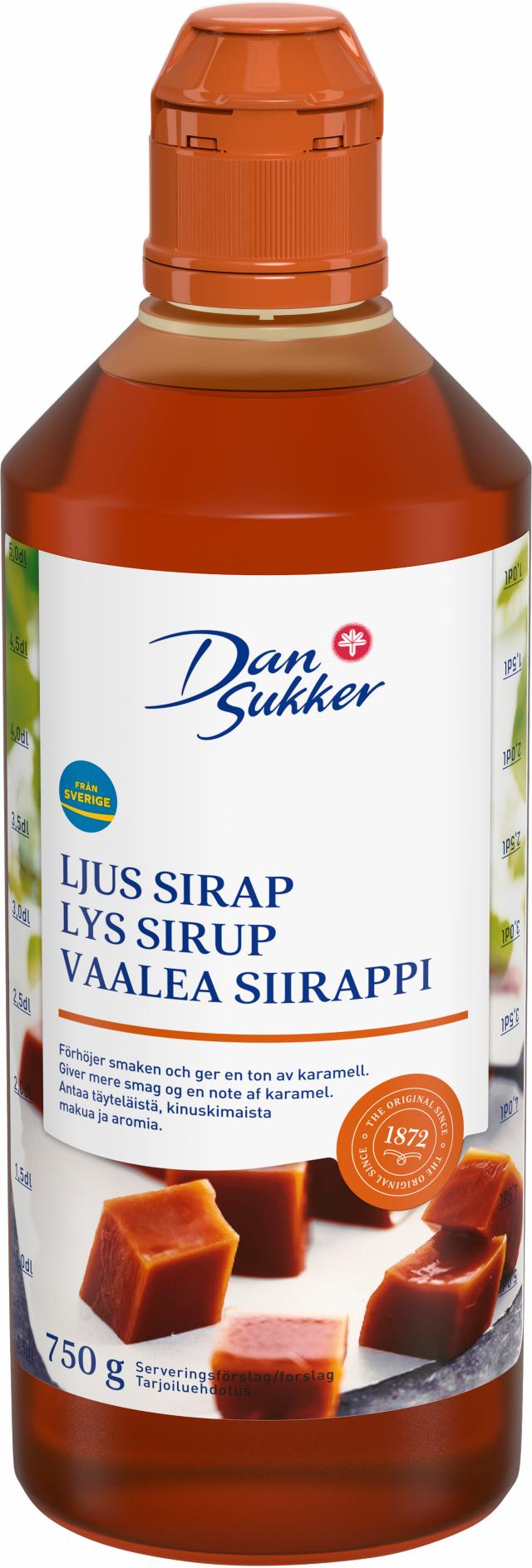Light Syrup
Syrup (sugar syrup) is obtained by mixing various by-products that are obtained when white sugar is produced from beet or cane sugar. Syrup is a viscous sugar solution that consists of sugar (sucrose), glucose and fructose. This combination of different sugar types prevents crystallisation, while the very high sugar content (approx. 80%) guarantees a long shelf life.
Different types of syrup are made by mixing the various by-products in various ways, resulting in variations in regard to colour and flavour. The colour and flavour are primarily derived from small amounts of mineral salts and other substances that are naturally present in the raw materials, but salt may need to be added to obtain the right flavour profile. Each syrup type is tailored to a specific area of use. Syrup is especially useful as a baking ingredient, but is also used for making confectionery, ice cream and desserts.
Light Syrup is the classic basic syrup for making sweets, cookies, desserts, sauces, meat dishes.
Dark Syrup is more distinctive and aromatic, with a full-bodied, toffee-like flavour. It is ideal in gingerbread and chocolate toffee, and as a flavour-enhancer in many savoury dishes.
White Baking Syrup is ideal for making sweet yeasted pastries. It keeps yeasted pastries soft and fresh for longer and improves their flavour. White Baking Syrup is also ideal for making sweets, ice cream and other deserts, and for cooking. It makes pizza bases extra soft and fluffy.
Light + Dark Bread baking Syrup = Bread baking Syrup We are now introducing a new Bread Syrup that will replace our Light and Dark Bread Syrups. The new Bread Syrup contains more malt than previously – 20%. This makes the bread tastier and moister because malt enhances the syrup's outstanding baking properties. The new Bread Syrup is ideal for making both light and dark bread.
Measures and weight: Syrup
100 ml = 140 g
1 tbsp = 20 g
1 tsp = 7 g
Nutritional values per 100 g
| Energy | 13226 kJ/312 kcal |
| Fat | 0 g |
| - of which saturates | 0 g |
| Carbohydrates | 78 g |
| - of which sugars | 78 g |
| Protein | 0 g |
| Salt | 1,0 g |

Christmas baking
Baking for Christmas is always something special. This is the one safe haven that always seems to cling to tradition. But perhaps you would like to try something different for a change… you might find yourself a new favourite goodie this year!

Christmas drinks
The Christmas holiday provides many opportunities to get together and mingle with a pleasant drink in the hand. A few suggestions for Christmas celebrations big and small.

Christmas goodies
For many, Christmas wouldn't be complete without sweet treats. Put out homemade toffees, chocolates and truffles for everyone to enjoy. Whether you want the most classic Christmas treats or more advanced alternatives, we've got the recipe.

Gingerbread biscuits
Is there anything better than the smell of freshly-baked gingerbread biscuits? Only eating them! Gingerbread biscuits can be hard or soft, with or without icing, almost any shape, or as entire houses. You decide what you want.

Delicious Christmas presents
The most special Christmas gifts are hand-made and filled with happiness. Create your own Santa Claus’s workshop in the kitchen and savour the Christmas spirit as you make sweets and wrap parcels.

Christmas Baking with Love
Find recipes and inspiration for unique Christmas Hearts for all those you care about.
